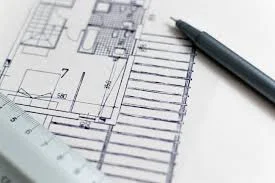Definition: Ground improvement refers to various techniques used to enhance the engineering properties of soil, such as increasing its strength, stability, bearing capacity, or reducing its permeability. These techniques are crucial for safe and efficient construction on weak or problematic soils.
Click the Translate button(see right) on this post to set your Own Language to understand more perfectly!!
Ground Improvement Cost Estimation Calculator
Ground Improvement Cost Estimation Calculator
Definition Continue:
Ground Improvement Techniques with Cost Estimates and Usefulness
Ground improvement refers to various techniques used to enhance the engineering properties of soil, such as increasing its strength, stability, bearing capacity, or reducing its permeability. These techniques are crucial for safe and efficient construction on weak or problematic soils. Here's a breakdown of some common ground improvement methods with cost estimations and their applications:
1. Compaction:
Description: Mechanically densifying the soil by forcing air voids out, resulting in a denser and stronger soil mass.
Cost Estimation: $1 - $5 per square meter ($0.10 - $0.50 per square foot). This is a relatively inexpensive method.
Usefulness: Suitable for loose, granular soils like sand and gravel for foundations, pavements, or building pads. Less effective in clay-rich soils.
Example: A developer needs to improve the bearing capacity of the soil for a new housing project on a sandy site. Compaction using a vibratory roller can be a cost-effective solution at around $2 per square meter ($0.20 per square foot).
2. Grouting:
Description: Injection of a fluid material like cement or chemical grout into the soil to fill voids and create a stronger, more cohesive soil mass.
Cost Estimation: $20 - $100 per meter depth per square meter treated ($5 - $25 per foot depth per square foot treated). This is a more expensive method compared to compaction.
Usefulness: Suitable for treating specific areas of weak soil, creating columns for foundation support, or reducing water permeability in excavations.
Example: An existing building foundation needs reinforcement due to weak soil conditions. Grouting with a suitable material can strengthen the soil around the foundation at an estimated cost of $50 per meter depth per square meter treated ($12.50 per foot depth per square foot treated).
3. Vibrocompaction (Vibro Replacement):
Description: Uses powerful vibrators inserted into the ground to densify loose soils while replacing some soil with crushed stone.
Cost Estimation: $30 - $80 per cubic meter ($10 - $25 per cubic yard). This is a more specialized and expensive method.
Usefulness: Effective for densifying deep foundations or large areas of loose, saturated soils.
Example: A bridge construction project requires densification of a deep layer of loose, sandy soil under the foundation. Vibrocompaction can be a suitable solution at an estimated cost of $50 per cubic meter ($15 per cubic yard).
4. Pile Foundations:
Description: Deep foundations consisting of precast concrete piles, steel H-piles, or driven timber piles driven into the soil to transfer building loads to a deeper, stronger soil layer.
Cost Estimation: $20 - $100 per linear meter ($6 - $30 per linear foot) for the piles themselves, plus additional costs for installation equipment and labor. This is a very expensive method.
Usefulness: Used for structures requiring high load-bearing capacity or construction on weak or unstable soil layers.
Example: A high-rise building needs to be built on soft clay. Pile foundations can provide the necessary support at a significant cost, potentially exceeding $50 per linear meter ($15 per linear foot) for the piles alone.
5. Geosynthetics (Geogrids and Geotextiles):
Description: Using geosynthetic materials like geogrids or geotextiles to improve soil reinforcement, separation, filtration, or drainage.
Cost Estimation: $1 - $10 per square meter ($0.10 - $1.00 per square foot) for the materials, plus installation costs. This can be a cost-effective solution depending on the application.
Usefulness: Used for reinforcing slopes, retaining walls, or improving drainage in foundations.
Example: A road project needs to be built on a soft clay subgrade. Geogrids can be used to reinforce the soil and improve its load-bearing capacity at a relatively lower cost, potentially around $3 per square meter ($0.30 per square foot) for the material.
Important Note: These cost estimations are for illustrative purposes only and can vary significantly depending on project location, soil conditions, specific technique used, and market factors. Consulting with a geotechnical engineer is crucial for accurate cost estimations and selecting the most appropriate ground improvement method for a specific project.
Overall, ground improvement techniques play a vital role in ensuring the safety and stability of structures built on challenging soil conditions. By understanding the various techniques and their applications, engineers and construction professionals
How to improve Ground by either Compaction or Grouting Or Stoning:
Ground improvement by compaction, grouting, or stoning refers to techniques used to improve the mechanical properties (strength, stability, bearing capacity) of the soil, not its electrical conductivity for grounding systems.
Here's a breakdown of each method in the context of ground improvement:
1. Compaction:
Compaction involves mechanically densifying the soil by forcing air voids out of the soil particles, bringing them closer together. This process increases the soil's density and strength.
Compaction is often achieved using specialized equipment like mechanical tampers or vibrators.
This technique is most effective in loose, granular soils like sand and gravel. Clay-rich soils may not see significant improvement due to their inherent plasticity.
2. Grouting:
Grouting involves injecting a fluid material like cement or chemical grout into the soil to fill voids and weaknesses. This creates a stronger, more cohesive soil mass.
Grouting materials are chosen based on their strength, setting time, and compatibility with the soil conditions.
Grouting is a targeted approach suitable for treating specific areas of weak soil or creating columns of improved soil to support structures.
3. Stoning:
Stoning involves placing crushed rock or gravel around an area to create a stiff, stable base. This method improves the load-bearing capacity of the ground and helps prevent settlement.
Crushed rock provides a more stable and uniform base compared to natural soil. This can be beneficial for foundations, pavements, or other structures.
Stoning is a simpler technique but may not be suitable for deep soil improvement or where high strength is required.
Choosing the Right Method:
The selection of the most suitable ground improvement method depends on several factors, including:
Soil type and properties: Different methods are more effective for specific soil conditions like strength, permeability, and grain size.
Project requirements: The desired improvement in terms of bearing capacity, settlement reduction, or overall stability will influence the choice of technique.
Site constraints: Space limitations or accessibility issues may influence the choice of technique.
Cost and ease of implementation: Each method has different cost considerations and installation complexities.
A geotechnical engineer can assess the specific site conditions and recommend the most appropriate ground improvement method by compaction, grouting, or stoning to achieve the desired engineering properties for a construction project.
How it is possible to Earn money using the Knowledge of Ground improvement cost calculation in real world???
There are several ways to leverage your knowledge of ground improvement cost calculation in the real world and turn it into income. Here are some possibilities:
Consulting Services:
Geotechnical Engineer: This is the most direct path. As a geotechnical engineer, you'd use your expertise in soil mechanics and ground improvement techniques to analyze site conditions, recommend appropriate methods, and perform cost calculations for construction projects.
Ground Improvement Contractor: Work for a ground improvement contractor, assisting with project proposals, cost estimations, and bidding processes. You can also be involved in project management, ensuring efficient execution within budget.
Independent Ground Improvement Consultant: Offer your services as an independent consultant to construction companies, developers, or engineering firms. You can specialize in specific ground improvement methods or cater to a particular niche within the construction industry.
Construction Project Cost Estimation:
Cost Estimator/Quantity Surveyor: Utilize your knowledge of ground improvement costs to create accurate cost estimates for construction projects. This includes estimating material quantities, labor costs, and equipment rentals for various ground improvement techniques.
Construction Project Management: In construction project management, your ground improvement cost calculation skills can be valuable for budgeting, scheduling, and risk management. You can ensure that ground improvement works stay within budget and are completed on time.
Content Creation or Training:
Develop Online Courses: Create online courses or training materials teaching construction professionals about ground improvement techniques and cost estimation methods.
Technical Blog/Website: Build a website or blog dedicated to ground improvement. Provide informative content on the topic, including cost analysis, case studies, and project comparisons. You can monetize through advertising, affiliate marketing, or premium content subscriptions.
Additional factors to consider:
Combine your knowledge: For some opportunities, combining your ground improvement cost calculation expertise with other construction knowledge like soil mechanics or foundation design could be beneficial.
Networking and Marketing: Building relationships with potential clients and promoting your services effectively is crucial for success.
Software proficiency: Familiarity with construction cost estimation software can be valuable in some roles.
By leveraging your knowledge of ground improvement cost calculation in creative ways, you can establish yourself as a valuable resource and earn money in the construction industry.
Do YOU Want To Earn Money In Various Ways, Click The Link & Explore Your Field of Interest!!!



























